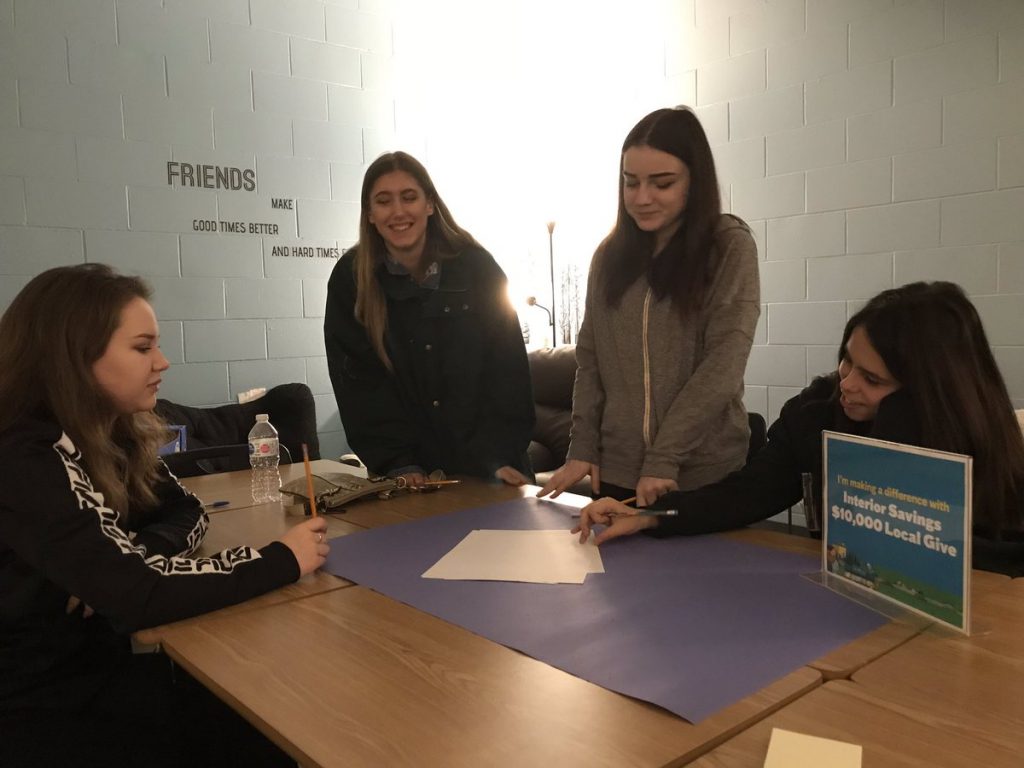Many people view teaching as much more than just a profession. Some even claim that it’s a calling, and that only a select few have the right blend of passion, patience and proficiency to guide others. That might explain why Wynter Oakes felt as though she’d been called upon to apply for our $10,000 Local Give campaign when she saw it advertised on Facebook earlier this year.
Mrs. Oakes, as she’s known to her students, is a teacher-librarian at the Kelowna Secondary School Library Learning Commons. She believes in a world where kindness is common place, and people passionately pursue their interests. That’s why she’s been striving to support as many students as possible in each of their own, unique academic pursuits and future aspirations.
“I have an interest in supporting our diverse school population,” began Wynter. “One group in particular that I have been working with is our Indigenous students. I wanted to bring something into the Library Learning Commons that would make them feel more connected to it.”
As a librarian, her first thought was naturally to use her portion of the $100 to acquire more authentic Indigenous resources such as books, graphic novels and a variety of digital materials — something she’d been working towards, even before hearing about the Local Give campaign. However, when she brought the initial idea to the students, they had something entirely different in mind — something symbolic and meaningful, and more permanent.
“I met with approximately twelve of our Indigenous students over lunch to discuss the Local Give campaign and what I had envisioned,” said Wynter. “I am thrilled to say that the students took ownership of the idea, and instead suggested that a medicine wheel should be created and displayed in some way within the space.”

Traditionally, medicine wheels have been used by Indigenous tribes for health and healing. They embody the four directions (north, east, south and west), as well as Father Sky, Mother Earth and Spirit Tree — all of which symbolize dimensions of health and the cycles of life. Medicine wheels can be represented in many different forms including artifacts, paintings or physical structures. For Wynter’s students, having the artwork displayed at school was representative of honouring and sharing an important piece of their culture.
Over several more lunch hours, the idea evolved, and the group collectively decided on a permanent art installations that would be prominently displayed within the Library Learning Commons; representing part of the medicine wheel. Four of the school’s Indigenous students volunteered as artists to complete the art piece, and took the initiative to create the pieces on their own time.
Wynter explained that, in the end, the $100 from Local Give went toward offsetting the cost of the art supplies used, including wood, paint, canvas and other materials. Wynter sees it as an investment, not only in terms of the infrastructure of the space, but also into multiple generations of students. “We are honoring an important cultural teaching of our approximately 160 current indigenous students, but also of all the Indigenous students that we will serve in the years to come. Other students and staff will also now have an increased awareness of what the medicine wheel represents and the cultural importance of it within the Indigenous community.”
When asked about her thoughts on Local Give, Wynter, without hesitation, said that she was all for it, since it allows for individuals to realize their own potential, to determine what small steps they can take to impact their community and to empower them to make positive change.
“Building a positive sense of community within a school is important, and Local Give gave us the ability to make students feel more connected, and allowed us to take action to build that connection within the Kelowna Secondary community.”
From all of us at Interior Savings, we thank Wynter and her students for their leadership, creativity and commitment to building community.


